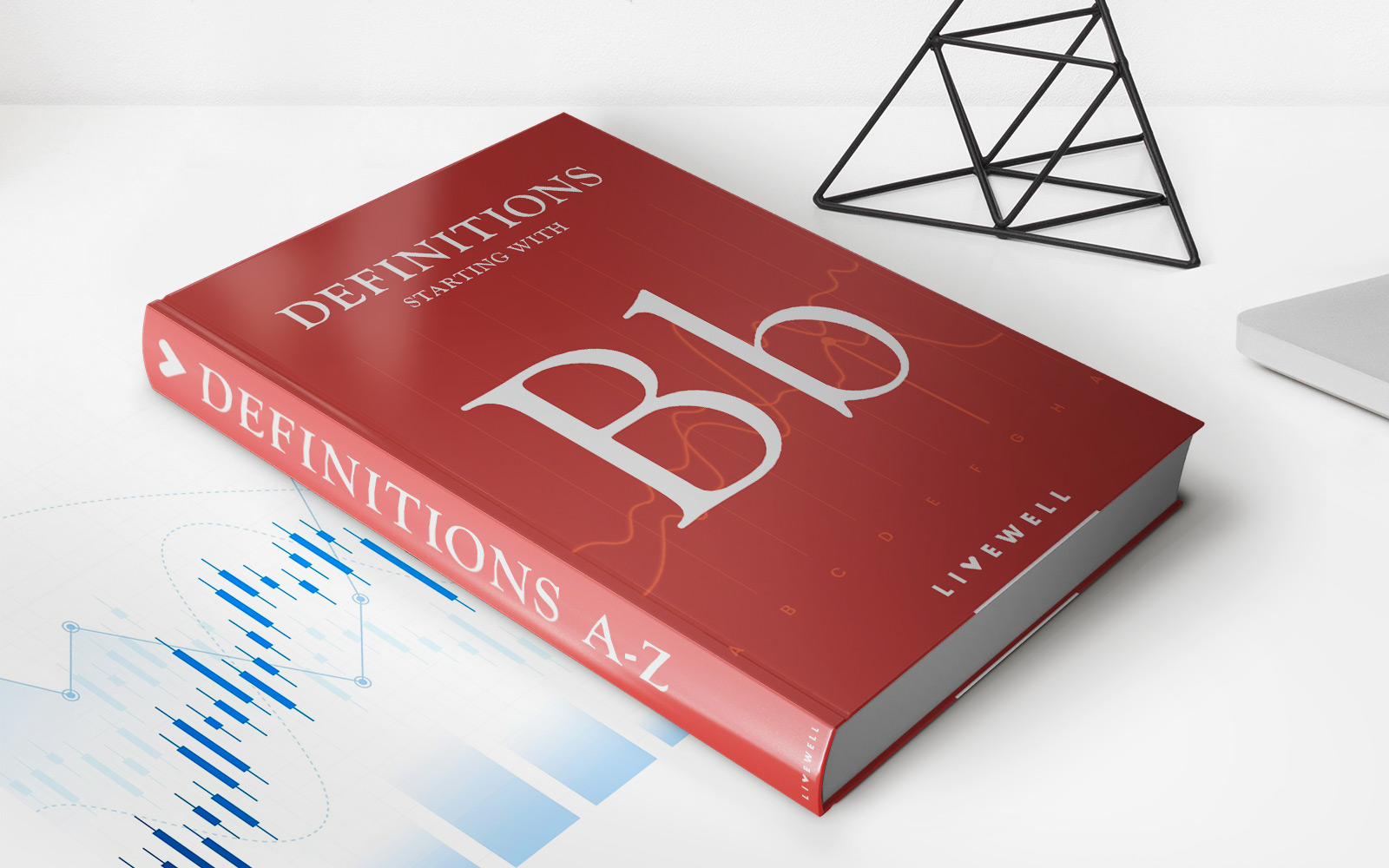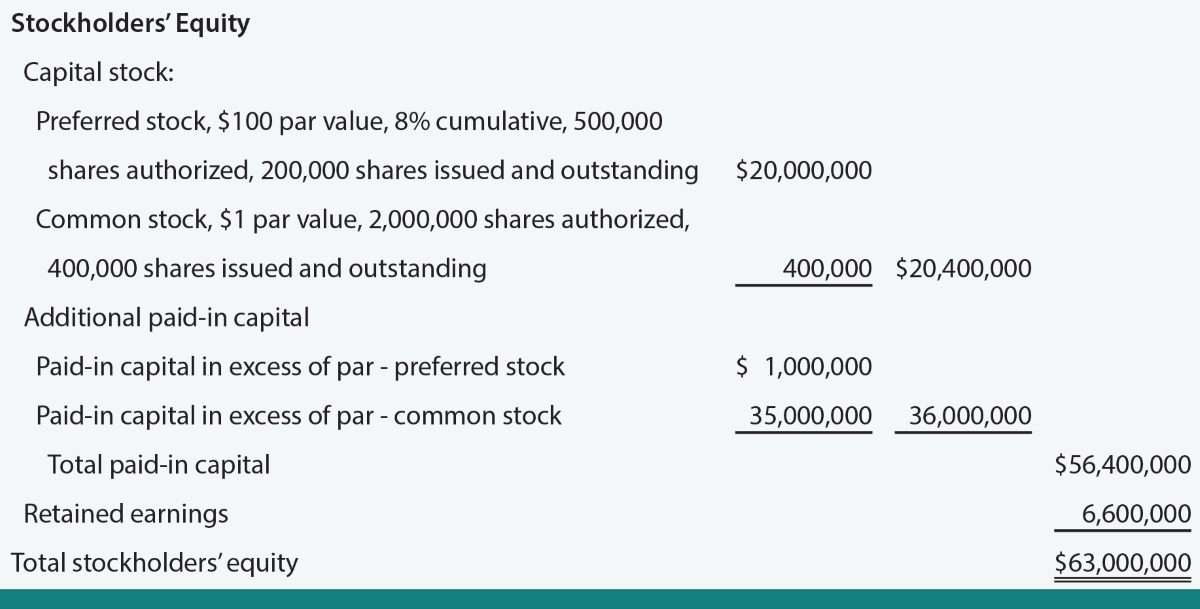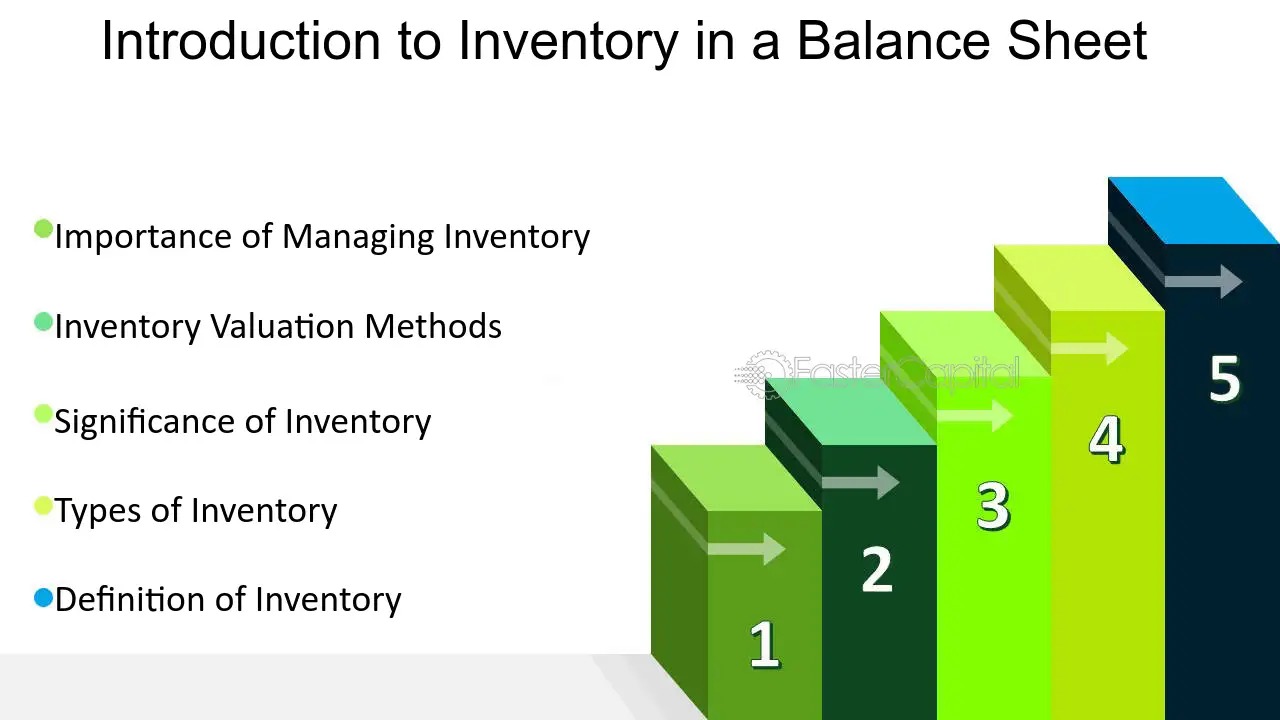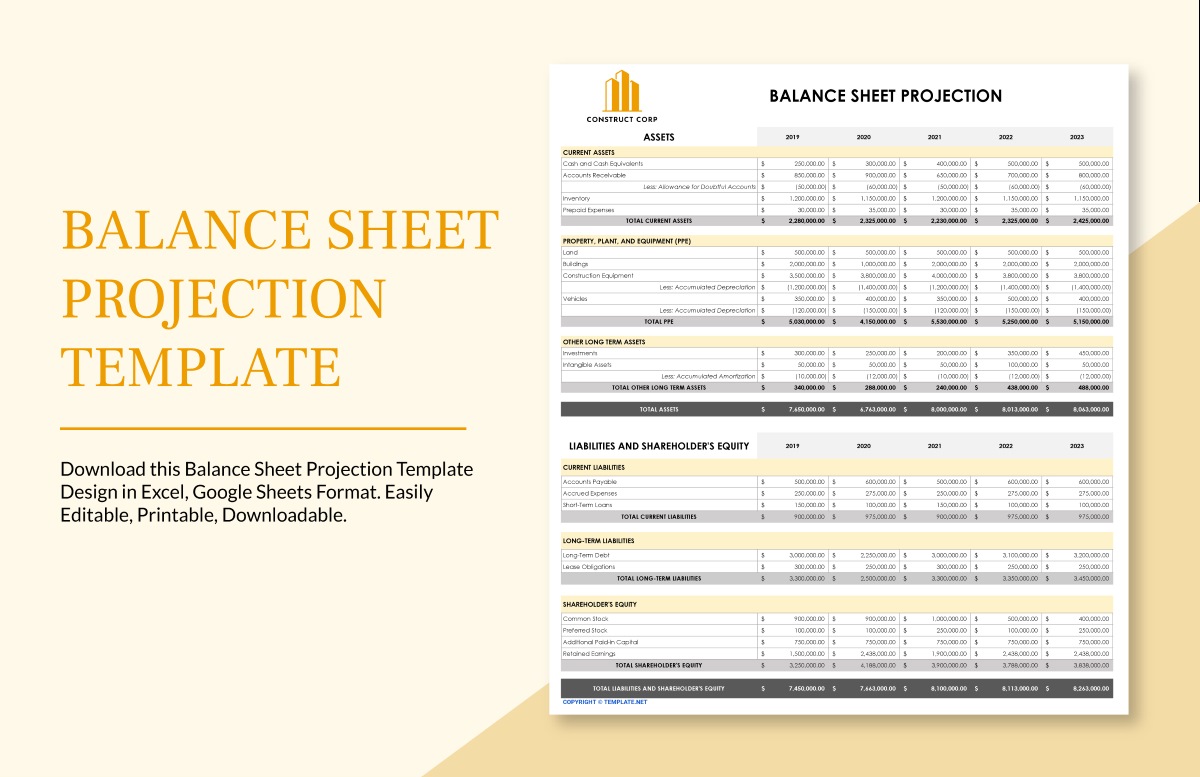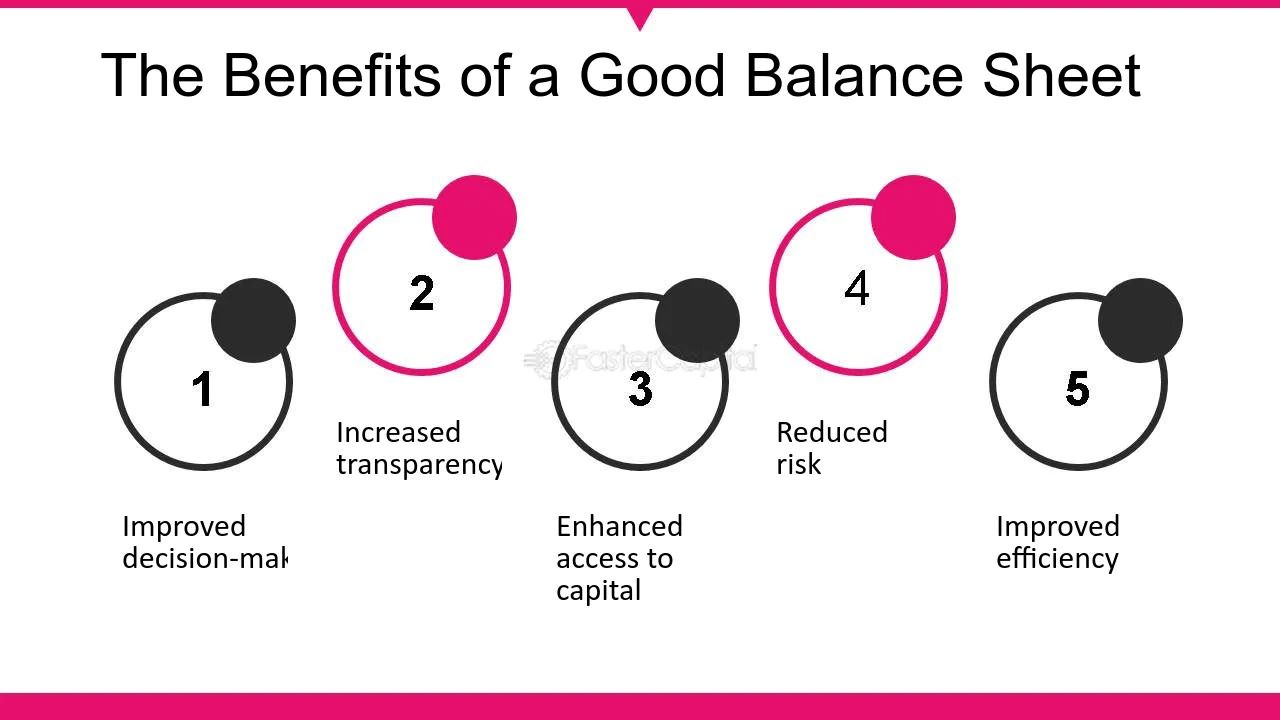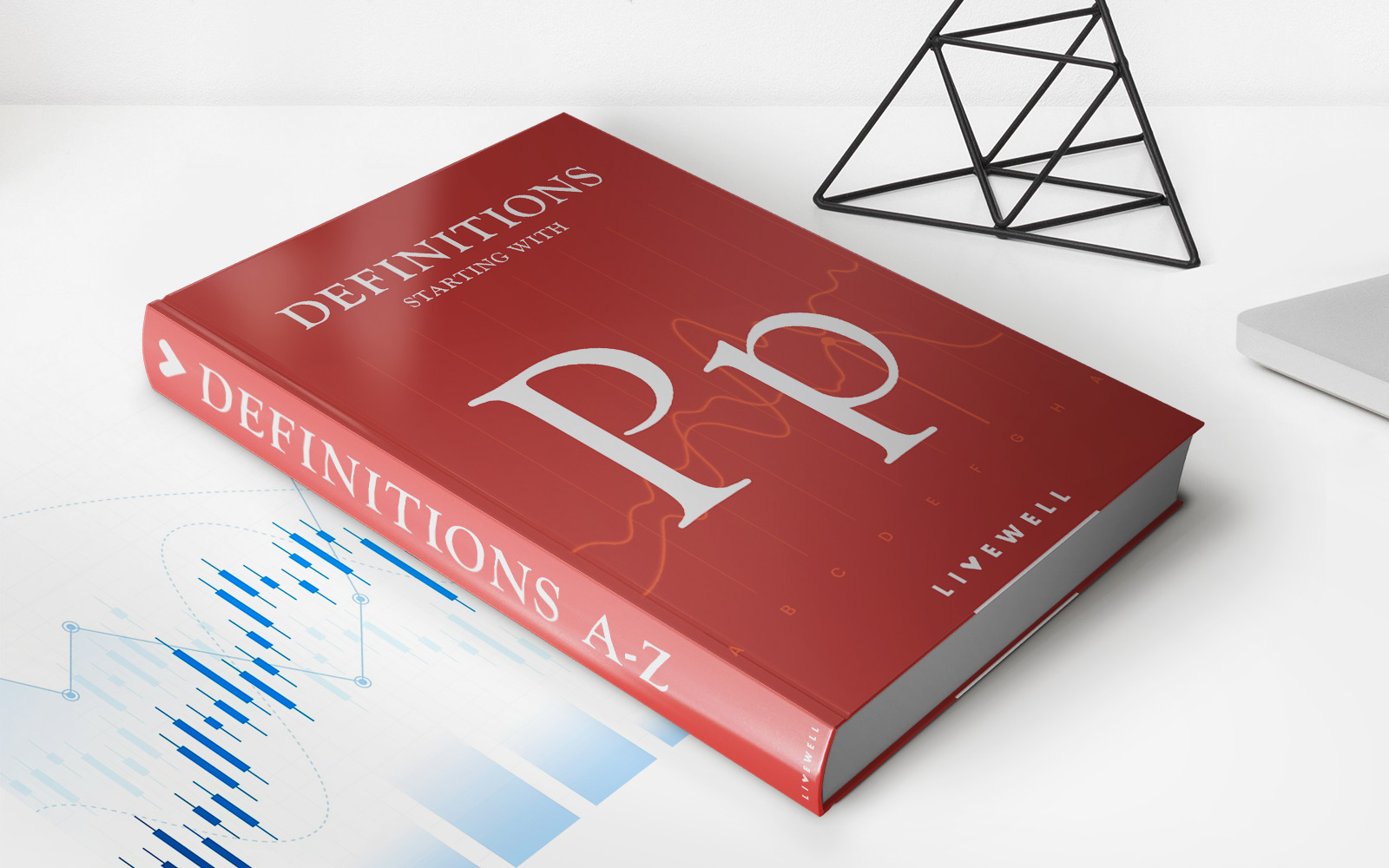Home>Finance>The Balance Sheet Is At The Heart Of Which Type Of Bookkeeping?


Finance
The Balance Sheet Is At The Heart Of Which Type Of Bookkeeping?
Modified: March 2, 2024
The balance sheet, a crucial component of finance bookkeeping, provides a comprehensive snapshot of a company's financial position.
(Many of the links in this article redirect to a specific reviewed product. Your purchase of these products through affiliate links helps to generate commission for LiveWell, at no extra cost. Learn more)
Table of Contents
Introduction
When it comes to bookkeeping, the balance sheet is an indispensable tool that plays a crucial role in keeping financial records accurate and organized. In essence, the balance sheet provides a snapshot of a company’s financial position at a specific point in time by summarizing its assets, liabilities, and shareholders’ equity. It is often referred to as the “heart” of bookkeeping because it brings together all the crucial elements that determine a company’s financial health.
The balance sheet is one of the three key financial statements, along with the income statement and cash flow statement. While the income statement focuses on a company’s revenues and expenses over a given period, the balance sheet provides a broader view of its financial situation by reflecting its resources and obligations.
For businesses, regardless of their size or industry, keeping accurate and up-to-date financial records is essential for making informed decisions, attracting investors, and ensuring compliance with regulatory requirements. The balance sheet acts as a central piece of the bookkeeping puzzle, offering valuable insights into a company’s financial standing that can drive strategic planning and financial management.
In this article, we will explore the definition and importance of a balance sheet in bookkeeping. We will also delve into the role of the balance sheet in both single-entry and double-entry bookkeeping systems, shedding light on how it contributes to maintaining accurate financial records. Understanding the significance of the balance sheet is crucial for anyone involved in financial management or interested in gaining a comprehensive understanding of a company’s financial position.
Definition of a Balance Sheet
A balance sheet is a financial statement that provides a snapshot of a company’s financial position at a specific point in time. It presents a summary of a company’s assets, liabilities, and shareholders’ equity, allowing stakeholders to assess its financial health and solvency. The balance sheet follows a fundamental accounting equation: Assets = Liabilities + Shareholders’ Equity.
Assets refer to the resources owned by a company that have economic value. This includes cash, accounts receivable, inventory, property, and equipment. Liabilities represent the obligations and debts a company owes to external parties, such as loans, accounts payable, and accrued expenses. Shareholders’ equity is the residual interest in the company’s assets after deducting liabilities, including retained earnings and contributed capital.
The balance sheet is divided into three key sections: assets, liabilities, and shareholders’ equity. Under each section, specific accounts are listed, providing detailed information about the nature and value of each item. Assets are listed in order of liquidity, with the most liquid assets, such as cash, at the top. Liabilities are generally listed in order of priority, with short-term liabilities appearing before long-term ones. Shareholders’ equity includes common stock, preferred stock, additional paid-in capital, retained earnings, and other equity accounts.
The balance sheet offers valuable insights into a company’s financial stability and its ability to meet its financial obligations. It helps stakeholders analyze the composition and value of a company’s assets, assess its debt obligations, and determine the ownership claim of shareholders. By comparing balance sheets from different periods, stakeholders can track the changes in a company’s financial position over time and identify trends or financial risks.
Overall, the balance sheet acts as a foundation for comprehensive financial analysis. It is a critical document for investors, lenders, regulators, and internal management, as it provides a clear and concise representation of a company’s financial situation. Understanding the components and structure of a balance sheet is essential for interpreting financial information and making informed decisions based on a company’s financial health and performance.
Importance of Balance Sheet in Bookkeeping
The balance sheet plays a vital role in bookkeeping as it provides a comprehensive overview of a company’s financial position. Its importance lies in several key aspects:
1. Financial Analysis: The balance sheet enables financial analysis by providing essential information about a company’s assets, liabilities, and shareholders’ equity. By examining these components, stakeholders can assess a company’s solvency, liquidity, and overall financial health. This analysis helps in evaluating the company’s ability to meet its short-term and long-term obligations, identifying areas of strength and weakness, and making informed financial decisions.
2. Decision Making: The balance sheet serves as a crucial tool for decision-making, both internally and externally. Internal stakeholders, such as managers and executives, rely on the balance sheet to assess the financial impact of strategic decisions, allocate resources efficiently, and measure performance against financial objectives. External stakeholders, such as investors and lenders, use the balance sheet to evaluate a company’s financial stability and potential risks before making investment or lending decisions.
3. Stakeholder Transparency: The balance sheet promotes transparency and accountability by providing a clear and concise representation of a company’s financial position. It allows stakeholders to understand the composition of a company’s assets, its debt obligations, and the ownership claim of shareholders. This transparency builds trust, establishes credibility, and fosters positive relationships with investors, regulators, and other external parties.
4. Compliance and Reporting: The balance sheet is a key component of financial reporting and regulatory compliance. Companies are required to prepare and disclose their balance sheets as part of their financial statements, ensuring adherence to accounting standards and providing a true and fair view of their financial position. Compliance with reporting requirements enhances credibility and fosters trust among stakeholders.
5. Strategic Planning: The balance sheet aids in strategic planning by providing valuable insights into a company’s financial capabilities and limitations. It helps management identify areas of improvement, allocate resources effectively, and make informed decisions regarding investments, expansions, and business operations. By analyzing the composition of assets and liabilities, managers can determine the financial impact of different scenarios and develop strategies to achieve long-term goals.
In summary, the balance sheet is a fundamental tool in bookkeeping that enables financial analysis, supports decision-making, promotes transparency, ensures compliance, and facilitates strategic planning. It is essential for a company’s stakeholders to understand and interpret the information presented in the balance sheet to gain a holistic perspective of its financial position and make informed decisions based on that information.
Types of Bookkeeping Systems
Bookkeeping systems are the methods and processes used to record and track financial transactions. There are primarily two types of bookkeeping systems: single-entry bookkeeping and double-entry bookkeeping.
1. Single-Entry Bookkeeping System: Single-entry bookkeeping is a basic method used by small businesses or individuals to record financial transactions. In this system, only one entry is made for each transaction, taking into account only the basic details like cash inflow and outflow. It is a simpler approach that involves recording transactions in a single column ledger, typically for cash and bank accounts.
Single-entry bookkeeping is suitable for small businesses with straightforward financial transactions and limited reporting requirements. It allows for a basic understanding of income and expenses. However, it lacks the depth and accuracy provided by the double-entry system, and it can be prone to errors and omissions.
2. Double-Entry Bookkeeping System: Double-entry bookkeeping is a more comprehensive and widely used system in which every transaction affects at least two accounts. It follows the principle that every debit must have an equal and opposite credit. This system maintains a dual-entry record of all financial transactions, ensuring accuracy, balance, and integrity of financial data. Every transaction is recorded in both a debit and a credit account.
Double-entry bookkeeping provides a more detailed view of a company’s financial position, allowing for more accurate financial analysis and reporting. It facilitates the preparation of financial statements, including the balance sheet, income statement, and cash flow statement. This system is commonly used by medium to large businesses, as well as accounting professionals, due to its robustness and ability to handle complex financial transactions.
Overall, the choice between single-entry and double-entry bookkeeping systems depends on the size, complexity, and reporting requirements of a business. While single-entry bookkeeping may be suitable for small businesses with basic transactional needs, double-entry bookkeeping provides a more comprehensive and accurate representation of a company’s financial transactions and is generally preferred for larger organizations.
Single-Entry Bookkeeping System
The single-entry bookkeeping system is a basic method used by small businesses or individuals to record financial transactions. In this system, a single entry is made for each transaction, capturing only the basic details such as cash inflows and outflows. It is a straightforward approach that involves maintaining a simple ledger with a single column to record transactions.
In single-entry bookkeeping, transactions are recorded primarily for cash and bank accounts. Sales, expenses, and other financial activities are typically summarized in a simple cash book, which serves as the primary record of financial transactions. The cash book contains entries for cash received and cash paid, with a running balance to show the current cash position.
This system provides a basic understanding of income and expenses for small businesses and individuals. It is relatively easy to implement and requires minimal accounting knowledge. However, it has several limitations compared to the more robust double-entry bookkeeping system.
One major limitation of the single-entry system is its lack of accuracy and completeness. Since it focuses on cash-based transactions, it does not provide a comprehensive view of a company’s financial position. Important details, such as accounts receivable, accounts payable, inventory, and long-term liabilities, are not captured in the single-entry method.
Additionally, the single-entry system is prone to errors and omissions. Without the checks and balances of the double-entry system, it is easier for mistakes to occur, leading to discrepancies in financial records. It can also be challenging to track and analyze financial information in a single-entry system, making it less suitable for businesses with complex financial operations or reporting requirements.
Despite its limitations, the single-entry bookkeeping system may be sufficient for small businesses or individuals that have simple financial transactions and do not require extensive reporting. It can provide a basic record of cash flow and help manage day-to-day finances. However, as a business grows or becomes more complex, it is usually recommended to transition to a more sophisticated double-entry bookkeeping system to ensure accuracy, compliance, and better financial reporting capabilities.
Double-Entry Bookkeeping System
The double-entry bookkeeping system is a widely used method in accounting and bookkeeping. It provides a more comprehensive and accurate representation of a company’s financial transactions compared to the single-entry system. In double-entry bookkeeping, every transaction affects at least two accounts, with each entry having an equal and opposite debit or credit.
The fundamental principle of the double-entry system is that every financial transaction has two aspects: a debit and a credit. Debits and credits are recorded in different accounts based on their nature. Debits increase asset and expense accounts, while credits increase liability, equity, and revenue accounts. This system ensures that the accounting equation (Assets = Liabilities + Equity) is always in balance.
Double-entry bookkeeping provides a more detailed view of a company’s financial position. It allows for accurate tracking of income, expenses, assets, liabilities, and equity. By recording transactions in separate accounts, it becomes easier to analyze and reconcile financial information, prepare financial statements, and identify any discrepancies or errors.
The double-entry system offers several benefits, including:
- Accuracy: By requiring dual entries for each transaction, the double-entry system reduces the risk of errors and ensures that debits and credits are always balanced. This improves the accuracy and reliability of financial records.
- Financial Reporting: The comprehensive nature of double-entry bookkeeping allows businesses to prepare financial statements, including the balance sheet, income statement, and cash flow statement. These statements provide a clear picture of a company’s financial health, performance, and cash flow.
- Financial Analysis: The double-entry system facilitates financial analysis by providing detailed information on various accounts. It allows for a deeper understanding of a company’s financial position, profitability, and trends over time. This information is valuable for making informed business decisions.
- Regulatory Compliance: Many jurisdictions require businesses to maintain accurate financial records and adhere to specific accounting principles. The double-entry system ensures compliance with these regulations and provides a solid foundation for audits and tax reporting.
The double-entry bookkeeping system is suitable for businesses of all sizes and complexity levels. It provides a robust framework for recording, analyzing, and reporting financial transactions. While it requires a deeper understanding of accounting principles, businesses can leverage software and accounting systems to simplify the process and streamline their bookkeeping operations.
Overall, adopting double-entry bookkeeping is highly recommended for businesses seeking accurate financial reporting, better decision-making, and enhanced financial control. It provides a solid foundation for sound financial management and helps businesses navigate the complexities of the modern financial landscape.
Role of Balance Sheet in Single-Entry Bookkeeping
In a single-entry bookkeeping system, the balance sheet still plays an important role in providing a snapshot of a company’s financial position. While the single-entry system may not capture all the detailed information as comprehensively as the double-entry system, the balance sheet serves as a key tool for assessing the overall financial health and solvency of a business.
The balance sheet in single-entry bookkeeping summarizes the company’s assets, liabilities, and shareholders’ equity at a specific point in time. It provides a consolidated view of the company’s financial position, albeit on a simpler scale compared to the double-entry system.
At its core, the balance sheet in single-entry bookkeeping showcases the company’s assets, which include cash on hand, accounts receivable, inventory, and any other tangible or intangible resources. These assets represent the value of what the company owns and can be used to generate income or meet obligations. Examining these assets on the balance sheet gives insight into the company’s liquidity and ability to meet short-term financial obligations.
Liabilities are also included on the balance sheet in single-entry bookkeeping. These encompass the company’s outstanding debts and obligations to external parties, such as loans, accounts payable, and accrued expenses. Understanding the company’s liabilities helps determine its financial obligations and potential risks in terms of repayment or meeting future financial obligations.
The balance sheet in single-entry bookkeeping also reflects shareholders’ equity, which represents the residual interest in the company’s assets after deducting liabilities. Shareholders’ equity can be influenced by factors such as retained earnings, contributed capital, and any other equity accounts. It shows the net worth of the company from the perspective of its owners or shareholders.
While the balance sheet in single-entry bookkeeping may lack the detailed breakdown and accuracy of the double-entry system, it still provides valuable information for both internal and external stakeholders. It helps business owners and managers assess their company’s financial position, make informed decisions, and monitor the overall progress and growth of the business.
External stakeholders, such as investors or lenders, can also refer to the balance sheet in single-entry bookkeeping to evaluate the financial stability and creditworthiness of the company. They can gain insights into the company’s assets, liabilities, and shareholders’ equity, which can assist in determining the potential level of risk associated with the investment or lending.
Overall, while the balance sheet in single-entry bookkeeping may not offer the same level of detail as in the double-entry system, it still serves as a valuable financial statement. It provides a concise overview of a company’s financial position, allowing for basic analysis and decision-making in the absence of the more robust double-entry bookkeeping system.
Role of Balance Sheet in Double-Entry Bookkeeping
In a double-entry bookkeeping system, the balance sheet plays a crucial role in providing a comprehensive and accurate snapshot of a company’s financial position. It serves as a key financial statement that summarizes the company’s assets, liabilities, and shareholders’ equity at a specific point in time.
The balance sheet in double-entry bookkeeping reflects the fundamental accounting equation: Assets = Liabilities + Shareholders’ Equity. It ensures that every financial transaction recorded in the double-entry system is balanced and maintains the accuracy and integrity of the company’s financial records.
Assets, as recorded on the balance sheet, represent the resources owned by the company. These include cash and cash equivalents, accounts receivable, inventory, property, plant, and equipment, as well as intangible assets such as patents or trademarks. The balance sheet provides a comprehensive view of a company’s assets, allowing stakeholders to understand the company’s financial capabilities and resource allocation.
Liabilities, another critical component of the balance sheet, represent the company’s obligations and debts to external parties. This includes accounts payable, loans, accrued expenses, and any other financial obligations. By analyzing the liabilities on the balance sheet, stakeholders can assess the company’s financial risks, debt repayment capacity, and overall financial stability.
Shareholders’ equity, also known as owner’s equity or net worth, is the residual interest in the company’s assets after deducting liabilities. It represents the portion of the company owned by shareholders and includes components such as retained earnings, additional paid-in capital, and accumulated comprehensive income. The balance sheet provides insight into the company’s net worth and the extent to which shareholders’ investments have contributed to the overall financial position.
By examining the balance sheet in double-entry bookkeeping, stakeholders can better understand the financial health and performance of the company. It enables them to assess the liquidity, solvency, and profitability of the business. The balance sheet is often used in conjunction with other financial statements, such as the income statement and cash flow statement, to gain a comprehensive picture of the company’s financial condition.
Furthermore, the balance sheet serves as a critical tool for decision-making. Business owners, managers, and investors can use the information on the balance sheet to assess the company’s financial position and make informed decisions regarding investments, financial management, and strategic planning. It helps identify areas of strength and areas that require attention, guiding effective resource allocation and risk management.
In summary, the balance sheet is a vital component of the double-entry bookkeeping system. It provides a comprehensive view of a company’s financial position, helping stakeholders assess its liquidity, solvency, and overall financial health. By examining the assets, liabilities, and shareholders’ equity on the balance sheet, stakeholders can make informed decisions and take appropriate actions to ensure the financial well-being and success of the company.
Conclusion
The balance sheet is a pivotal component of bookkeeping, regardless of whether a single-entry or double-entry system is utilized. It provides a comprehensive overview of a company’s financial position at a specific point in time, summarizing its assets, liabilities, and shareholders’ equity. The balance sheet serves as a vital tool for financial analysis, decision-making, stakeholder transparency, compliance, and strategic planning.
In a single-entry bookkeeping system, the balance sheet offers a simple yet valuable assessment of a company’s financial health. It provides an overview of assets, liabilities, and shareholders’ equity, allowing for basic analysis and decision-making. While lacking the depth and accuracy of the double-entry system, the balance sheet in single-entry bookkeeping still offers insights into a company’s liquidity, obligations, and net worth.
On the other hand, in a double-entry bookkeeping system, the balance sheet plays a more robust and integral role. It provides a comprehensive view of a company’s assets, liabilities, and shareholders’ equity, ensuring the accuracy and integrity of the financial records. The balance sheet in double-entry bookkeeping enables stakeholders to assess the company’s financial position, make informed decisions, and identify areas for improvement or growth.
Overall, regardless of the bookkeeping system used, the balance sheet serves as a fundamental tool for financial analysis and decision-making. It provides stakeholders with a clear and concise representation of a company’s financial health and performance. By understanding the composition and value of assets, the obligations depicted in liabilities, and the shareholders’ equity, stakeholders can assess a company’s financial stability, profitability, and potential risks.
In today’s complex financial landscape, maintaining accurate and reliable financial records is crucial for businesses. The balance sheet, as an essential component of bookkeeping, offers valuable insights into a company’s financial position, fostering transparency, trust, and informed decision-making. By leveraging the information presented in the balance sheet, businesses can navigate financial challenges, identify growth opportunities, and ensure sustainable success.

